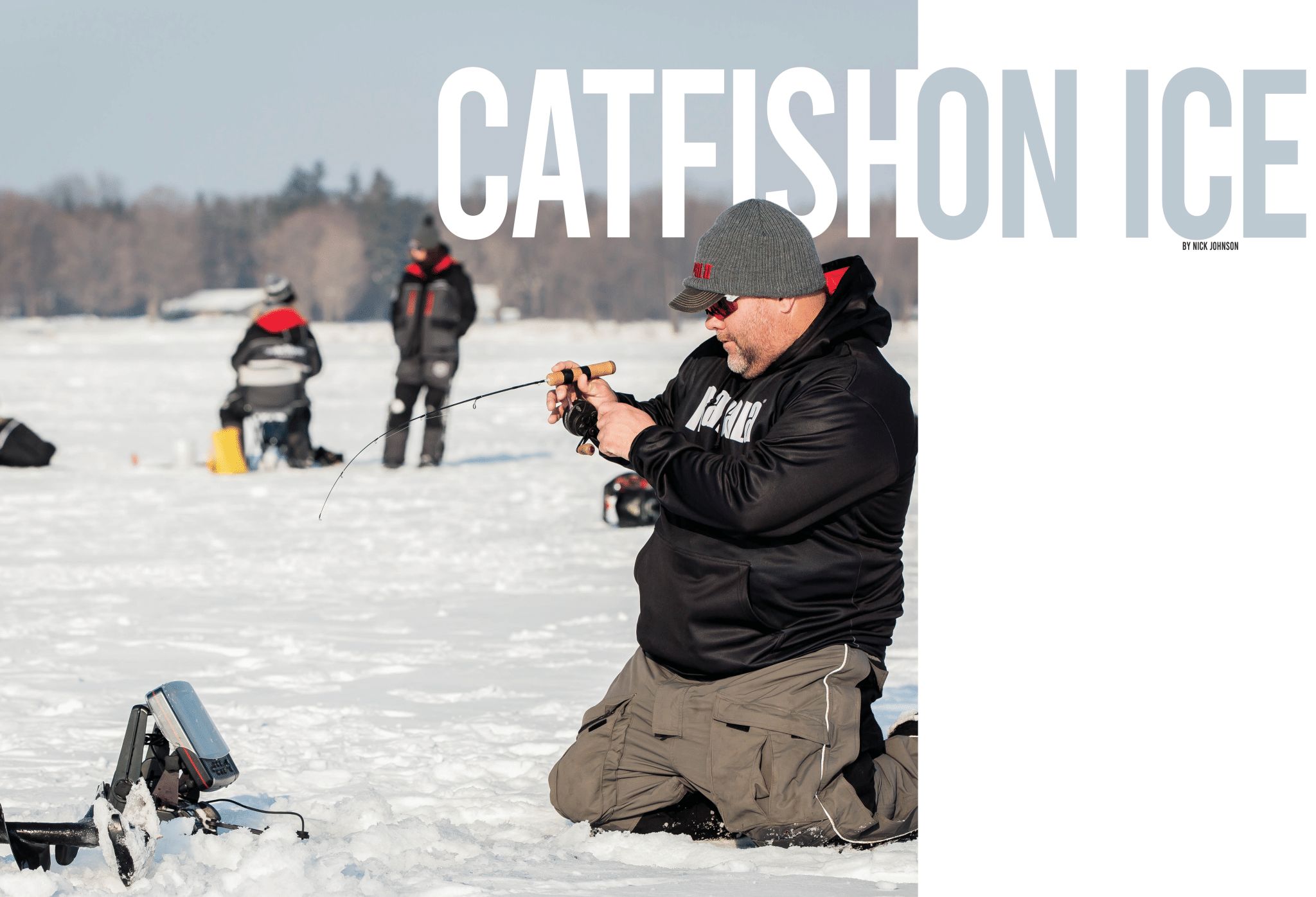Catfishing on Ice

Catfishing on Ice
I’ve been fortunate enough to catch channel catfish through the ice on numerous occasions throughout the years. Most of these came from farm ponds or city ponds, although a few have come from public lakes. If you can find them, they really aren’t that difficult to entice into biting. Finding them can be the challenge and so is the often-monumental battle that ensues when hooked into Mr. Whiskers on light ice gear.
Generally speaking, catfish are often caught through the ice while targeting other species such as panfish or walleyes. You can definitely target them however, especially in smaller ponds where the chances of encountering one are greatly increased. I’ve done this on a few occasions with good success.
The Gear
If you ice fish for Bluegill, Bass, Crappie and other common species in Iowa then you already have the tools needed for going after catfish. Channel catfish are often thought of as scavengers and one might think you need to soak some stink bait or cut bait on the bottom through the ice. While this can definitely work, Channel cats are in fact active predators and will happily gobble up a number of presentations, including artificial lures! I’ve actually caught a few on #3 and #4 Rapala Rippin Raps going after Bass and Crappie.
My favorite presentation for cats is very similar to what you would use for Perch, Walleye and panfish. I use a smaller Northland Buckshot spoon, red colors preferred, tipped with a waxie on each hook. You can also use a minnow head tipped on one of the hooks. Tungsten jig heads tipped with some waxies or spikes can also work but the hooks can be a little small and prone to ripping out as the catfish surges beneath the hole. Many different brands of spoons and jig heads will catch catfish, I’m just a big Buckshot fan all around.
Line size is something to consider. I wouldn’t go after a cat with anything less than a 4lb test. Ideally 6lb or 8lb if using mono. If I am specifically going after a cat, I will generally use my walleye rod which is a 34” medium action with 10lb Suffix ice braid. To that I attach a small barrel swivel and then about a 4’ chunk of 8lb or 10lb fluorocarbon leader. The swivel helps prevent line twist while jigging a spoon and also the erratic twisting of a catfish when they fight.
Most folks who ice fish nowadays own some type of depth finder or flasher which in my opinion is a critical tool whether it’s a basic flasher or a fancy live imaging unit. If you don’t own one or choose not to use one, that’s fine, but when it comes to catfish, the chances of success are greatly improved when you are able to see the depth, your bait, and the attitude of an approaching cat.
In my experience, catfish will often come into a bait being jigged and if the bait is paused or slowed down considerably, this is when they will strike. I like to keep my presentations close to the bottom, even bouncing it off the bottom every now and then. Sometimes a catfish will show up on the flasher as a big red band slightly suspended but in a lot of cases they will slide in so close to the bottom it will seem like the water depth just decreased by half a foot or more. Being able to see this unfold has definitely put more cats on the ice for me. I’ve only had experience with standard flashers doing this, but I couldn’t even imagine how fun this would be on a live imaging unit.
The last bit of gear to mention would be the auger. A 8” or 10” auger is going to be your go-to in a catfish application simply because catfish get pretty big and have this notorious behavior of locking their pectoral fins straight out as you try to wrestle them up the hole. My largest channel cat through the ice is somewhere in the 12lb neighborhood and it was actually quite an ordeal to get it through an 8” hole.
Where to Find Them
Channel catfish remain relatively active during the winter months and bear a striking similarity to largemouth bass in behavior, casually combing around, suspended at times, and feeding in a somewhat passive manner. Early ice and late ice are the best times to target them as they slow down their routine a little during the mid-winter period. Common forage for them during ice periods would be minnows, dead shad, small panfish and lots of emerging insect larva.
Finding catfish in ponds and small lakes is probably the best bang for your buck as I mentioned before, simply because the area to explore is smaller and the chances of encountering them are higher. I typically start my search in the deepest water which in most ponds and small lakes ranges from 10-20 feet. Catfish often congregate near or in this deeper water during the winter. Don’t be afraid to branch out and explore some edges or even shallower weed flats. I’ve caught a handful of catfish on shallow flats before and these fish are usually up there to feed and very willing to take a bait.
Fishing in larger lakes or reservoirs can be a fair bit more challenging, if not intimidating. In these applications it pays to be mobile and do a lot of searching. Deeper areas with adjacent shallower flats or a feeder creek are prime locations to start, especially if the tip of a point or inside turn are present. If water clarity permits, an underwater camera can be a great tool for locating a school of catfish in less time than it would take probing around with a flasher. If you find a good school of cats, make note of that location because chances are good, they will use the same general area year after year.
I mentioned my go-to baits and rigging and they still hold true for larger water fishing. However, this is where setting tip-ups, automatic fisherman, and similar set-style approaches will increase baits in the water, help locate fish, and increase the odds of catching a few more. With this approach, using baits such as fathead minnows or small chunks of cut bait set a few inches to a foot off the bottom is a good option.
Many of you reading this I am sure have tangled with a catfish through the ice before whether targeting them specifically or having a welcome surprise while fishing for other species. I’d argue the fight on a larger cat on ice tackle would rival most species present in our state. If you haven’t gone after them specifically, I encourage you to give it a whirl. Its something different and loads of fun if you can find a few fish. Have a great, safe season on the ice!
by Nick Johnson
January 2022

